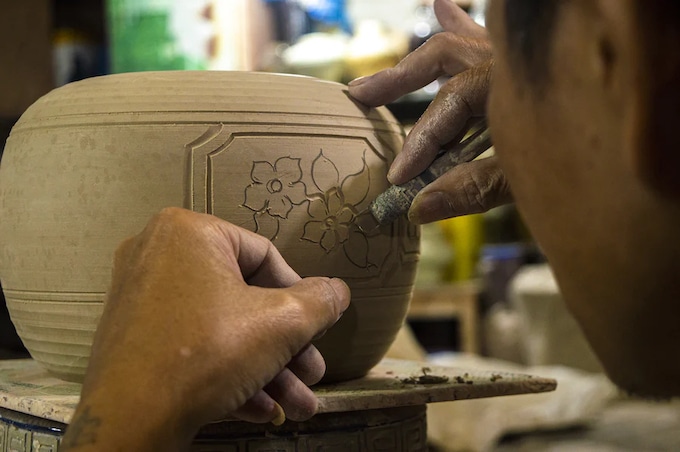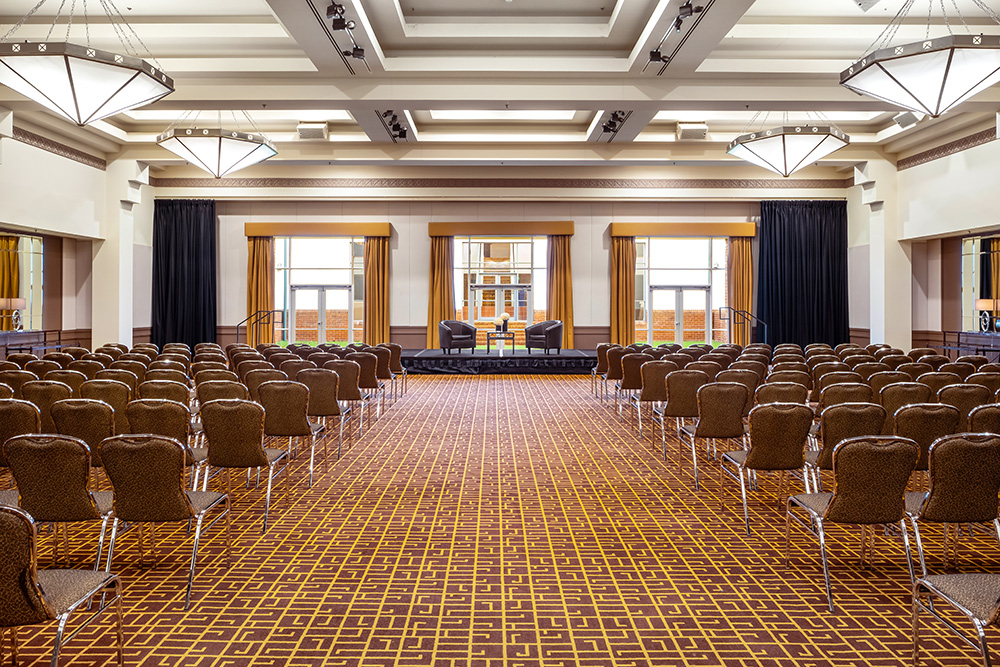Turn over that coffee mug your holding and look for the maker’s mark. There is a pretty good chance it came from this ceramic village near Hanoi. If you’re looking for things to do in Hanoi, Vietnam, consider taking a pottery lesson and walking tour of a local village famous for its ceramics. We finished our Bat Trang ceramic village tour hosted by Hanoi Memories and added it to our best things to do in Hanoi list.
After an incredible experience of exploring a monk bowl village in Thailand, I was looking for similar things to do in Hanoi. Most Bat Trang village tours (near Hanoi) take large groups for art classes in the ceramic pottery village. Looking for something more personal, we found a promising tour that another blogger wrote about, outlining an in-depth review of one Airbnb experience.
The itinerary included local transportation, walking through the factories and shops, eating at a local restaurant and making clay pots. It ticked all the boxes!
First of all, I went for the food and the pottery class (no surprises here). However, I learned much more about Bat Trang, its history, its people and how they have embraced modern techniques while keeping tradition with this ancient art form.
This tour takes about half a day so it is perfect for those looking for what to do in Hanoi for 4 days.
Bat Trang ceramic and pottery village near Hanoi
Bat Trang is a ceramic and pottery village which has been producing homewares in Hanoi since the 14th century. This village has become synonymous with the words “ceramic” and “porcelain”. Thanks to Wikipedia, the literal translation of the town is “bowl workshop” and today is one of the few working villages from the era.

Families have lived here for many generations, passing down traditional knowledge of working and shaping clay. Over time, as the country developed, the demand for ceramic goods increased. Modern techniques and technology started to replace traditional methods which helped make the process more efficient. Consequently, the results created new and unique products, such as porcelain lamps and large mural art.
Upon arriving at the village, we met Mr Hoang, a fifth-generation shopkeeper in the town who has lived in Bat Trang his whole life.
One of the local shops in Bat Trang ceramic village.
We follow him along narrow corridors popping into the different workshops making large vessels, or huge vases, some being four to five feet tall! As we walk along, we find each stop is another step in the extensive vessel process. We see mixtures poured into moulds, the drying out phase, the painting phase. Some shops paint brightly coloured scenes directly on to the vase while others create designs that seem to grow out of the pot with leaves, flowers and birds protruding from the surface.
Each finished product is carefully placed in the kiln to be fired overnight; twelve hours to heat up and another twelve hours to cool down.
Our last stop, the “Dragon Kiln.” I won’t share too much of the story on why it’s called that. What I will say is, once the centerpiece of the village, the Dragon Kiln is now a reminder of the longevity of pottery making in this community.
What to expect when visiting the pottery village
We took the local bus from the city to Bat Trang village. The ride took 40 minutes from the city center. Throughout the journey, our guide shared bits of local knowledge as we left the city, crossed the Red River and made our way to the village.
There is a lot of walking, so we recommend comfortable shoes. We went in late November; the weather was chilly, overcast with a few rain showers.
Josh and Son walk through an alley way to see the pottery workshops.
For the pottery class, wet clay will be everywhere, so, I suggest wearing clothing you can get dirty. I wore pants, and Josh wore shorts. In hindsight, shorts were a better choice because he could easily wash the mud from his legs where I had to walk around with clay on my pants for the rest of the day.
If you have no experience with pottery, it’s okay! Our host and teacher, Mr Hoang, was excellent and patient when showing us the basics of shaping the clay to make our items. You will be able to take home one thing (included in the package), any additional pieces will be an additional cost.
What we ate in the pottery village
There are many street food vendors in the area. However, we went to a local restaurant tucked away in the maze of corridors. If you came on your own, you probably wouldn’t find it, so you will need a local to help you get there.
Having lunch in the local restaurant was a great experience as well! Best known for their bánh cuốn, thin rice rolls filled with a stuffing of onions, mushrooms and pork mince. Watching the chef make piles of bánh cuốn was a treat in itself.
Conclusion
Son, our guide, is a fantastic host for our tour around Bat Trang. He was warm and hospitable, always checking that we were comfortable and looking after us while we were together. He spoke perfect English and surprised us with his knowledge of the city along with his jokes!
Visiting Bat Trang ceramic village with Son was a fun, educational and authentic experience in Hanoi, Vietnam. If you’re looking for what to do in Hanoi, add this tour to your best things list.
Book: Enjoy Making Ceramics in Ancient Town!
Cost at time of writing: USD 47 per person (transportation and meals included)
Follow: @hanoimemories on Instagram








